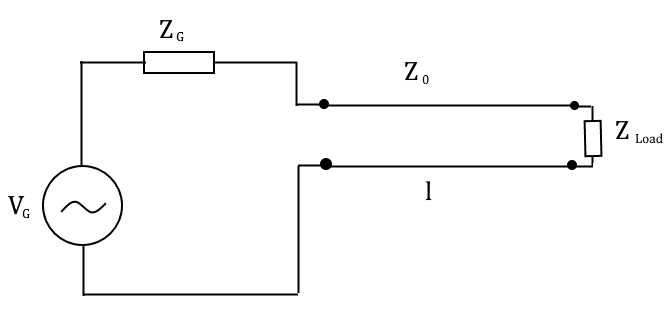I did some research on this a few months ago. Let's say you have a DC source of 3V, and a load of 200 ohm. The characteristic impedance of the line 50 ohm.
At time zero, the source sees an impedance of 50ohm, so current is 3 / 50 into the TL.
Some time later, voltage 3, current (3 / 50) will reach end of transmission line and see a load of 200.
At that point current can do two things:
A. Sink in whole or in part into 200 ohm resistor.
B. Return back along transmission line.
In B, it has 2 further options:
B.1. return in the same voltage as the incident wave
B.2. return in the opposite voltage (negative in this case) amplitude.
If anything returns, the amount of returning current adds or subtructs from the voltage of the incident wave at the end of TL line.
It solves the following equation (X is a fraction between 0 and 1):
3V + X * (3/50)A * 50 = (1 - X) * (3/50)A * 20Ohm
For case B.2.:
3V - X * (3/50)A * 50 = (1 - X) * (3/50)A * 200 Ohm.
In having too much current to sink into the 200 ohm resistor, it chooses to increase the voltage at the end of the TL line (when the incident wave gets there). The original current is distributed between 200 ohm resistor and a backward wave that adds to the voltage of the incident wave:
3V + voltage of backward wave = 3V + (backward travelling current) * 50 ohm = voltage across 200 ohm resistor = current across 200 ohm resistor * (200 ohm)
If the 200 ohm resistor were smaller than 50, it'd be the other way around (Case 2.B.), and the backward traveling wave will be of negative voltage and reduce the amplitude of 3V to (3V - (backward travelling current) * 50ohm).
If the load is 50 ohm, there won't be backward travelling wave (fraction X would be zero).
The backward travelling wave will reach the source at the same delay it took the incident wave to reach the load.
Meanwhile, the 3V will continue producing incident waves on its end (travelling through the line towards the load at a constant speed).
The backward wave will travel on top of incident waves (waves can travel over each other).
When it reaches the source, it will solve:
Let's say the backward voltage was 2V (current 2V / 50). You can solve the equation to know exactly.
3V DC source = 2V (backward wave) + (fraction of (2V / 50) current reversing to forward wave) * 50 Ohm
Some current reverses again into an incident wave to make the voltage at the start of the transmission line 3V as is the voltage of the DC source, and the rest of the current sinks into the 3V DC source (the current that doesn't reverse from backward wave back to forward wave).
(Since this solution encompasses the DC source and the backward wave, this is the complete solution for the start, or left edge, of the TL line for the moment the backwards wave comes back. There is nothing to add by superposition to the start of the TL line at that moment. Of course at the same moment some incident wave from earlier will reach the right end of the TL line, and will require a separate solution for the right end of the TL line).
(When there's no backward wave, the 3V at the start of the TL is achieved by an incident wave of (3V / 50 ohm) current into the TL line).
This is how a circuit simulator can track a lossless TL line, without using R, L, C as a model. There are general equations for AC sources, but it's nice to understand how to solve moment by moment (like in AC there are phasor equations, but it's nice to know the specific solution at each timestamp).
You could try it in LTSpice and in the Falstad simulator..
If you track this process for a DC source, with a TL line with, say, 500ns delay, you'll see that the effects of the mismatch hardly amount to anything except at the very beginning.
(This is not so difficult when it's explained, but seems like most books don't bother explaining those mechanics, and jump to generalizations instead).
If you have Z source (Zg in your figure), the initial incident wave will be: 3V / (Zg + 50). In my answer, I assumed that you don't have Zg, but the process is the same regardless of Zg, or, for that matter, the kind of circuit stage you have before and after the TL line.



